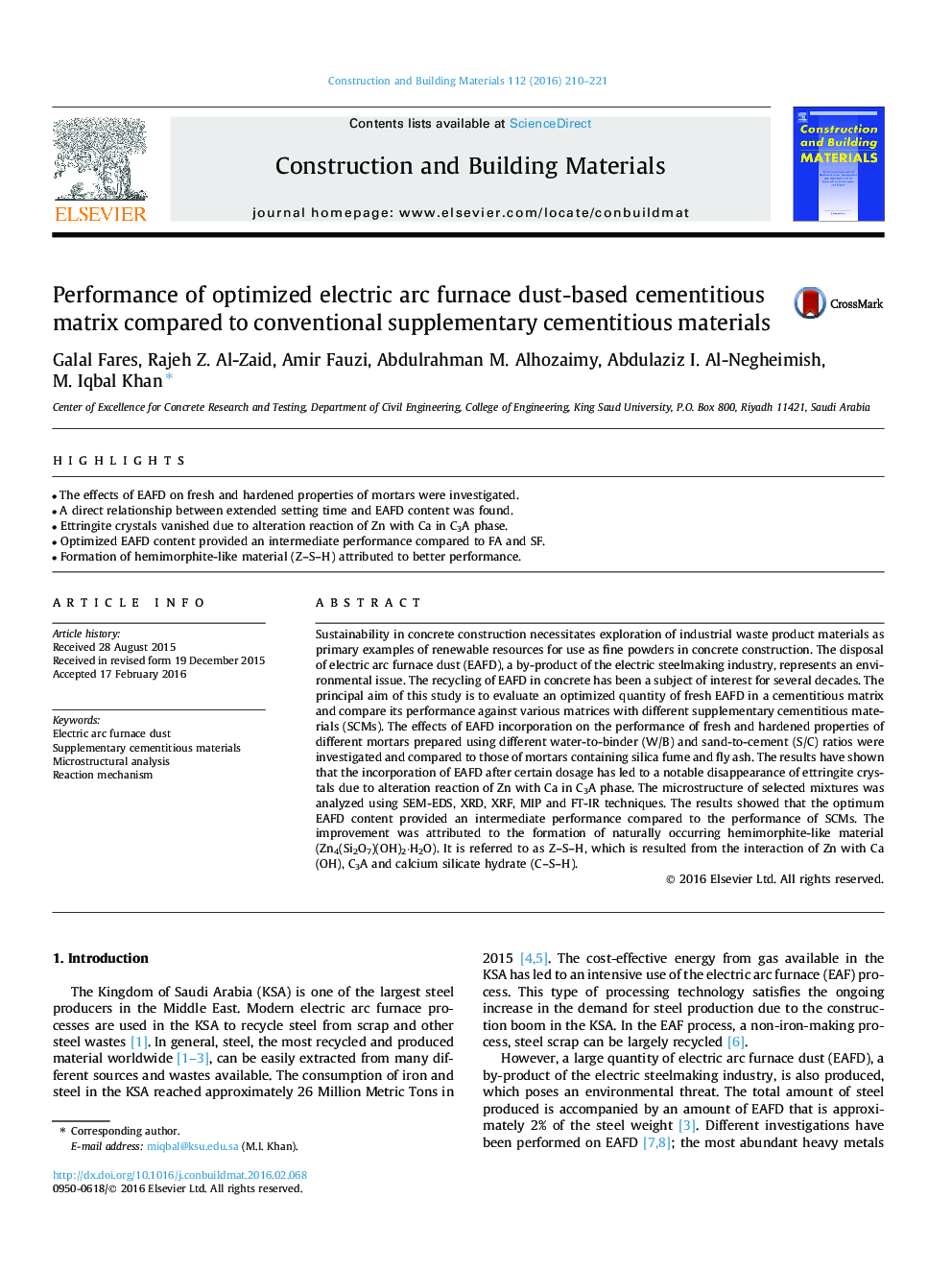| Article ID | Journal | Published Year | Pages | File Type |
|---|---|---|---|---|
| 6719067 | Construction and Building Materials | 2016 | 12 Pages |
Abstract
Sustainability in concrete construction necessitates exploration of industrial waste product materials as primary examples of renewable resources for use as fine powders in concrete construction. The disposal of electric arc furnace dust (EAFD), a by-product of the electric steelmaking industry, represents an environmental issue. The recycling of EAFD in concrete has been a subject of interest for several decades. The principal aim of this study is to evaluate an optimized quantity of fresh EAFD in a cementitious matrix and compare its performance against various matrices with different supplementary cementitious materials (SCMs). The effects of EAFD incorporation on the performance of fresh and hardened properties of different mortars prepared using different water-to-binder (W/B) and sand-to-cement (S/C) ratios were investigated and compared to those of mortars containing silica fume and fly ash. The results have shown that the incorporation of EAFD after certain dosage has led to a notable disappearance of ettringite crystals due to alteration reaction of Zn with Ca in C3A phase. The microstructure of selected mixtures was analyzed using SEM-EDS, XRD, XRF, MIP and FT-IR techniques. The results showed that the optimum EAFD content provided an intermediate performance compared to the performance of SCMs. The improvement was attributed to the formation of naturally occurring hemimorphite-like material (Zn4(Si2O7)(OH)2·H2O). It is referred to as Z-S-H, which is resulted from the interaction of Zn with Ca(OH), C3A and calcium silicate hydrate (C-S-H).
Keywords
Related Topics
Physical Sciences and Engineering
Engineering
Civil and Structural Engineering
Authors
Galal Fares, Rajeh Z. Al-Zaid, Amir Fauzi, Abdulrahman M. Alhozaimy, Abdulaziz I. Al-Negheimish, M. Iqbal Khan,
